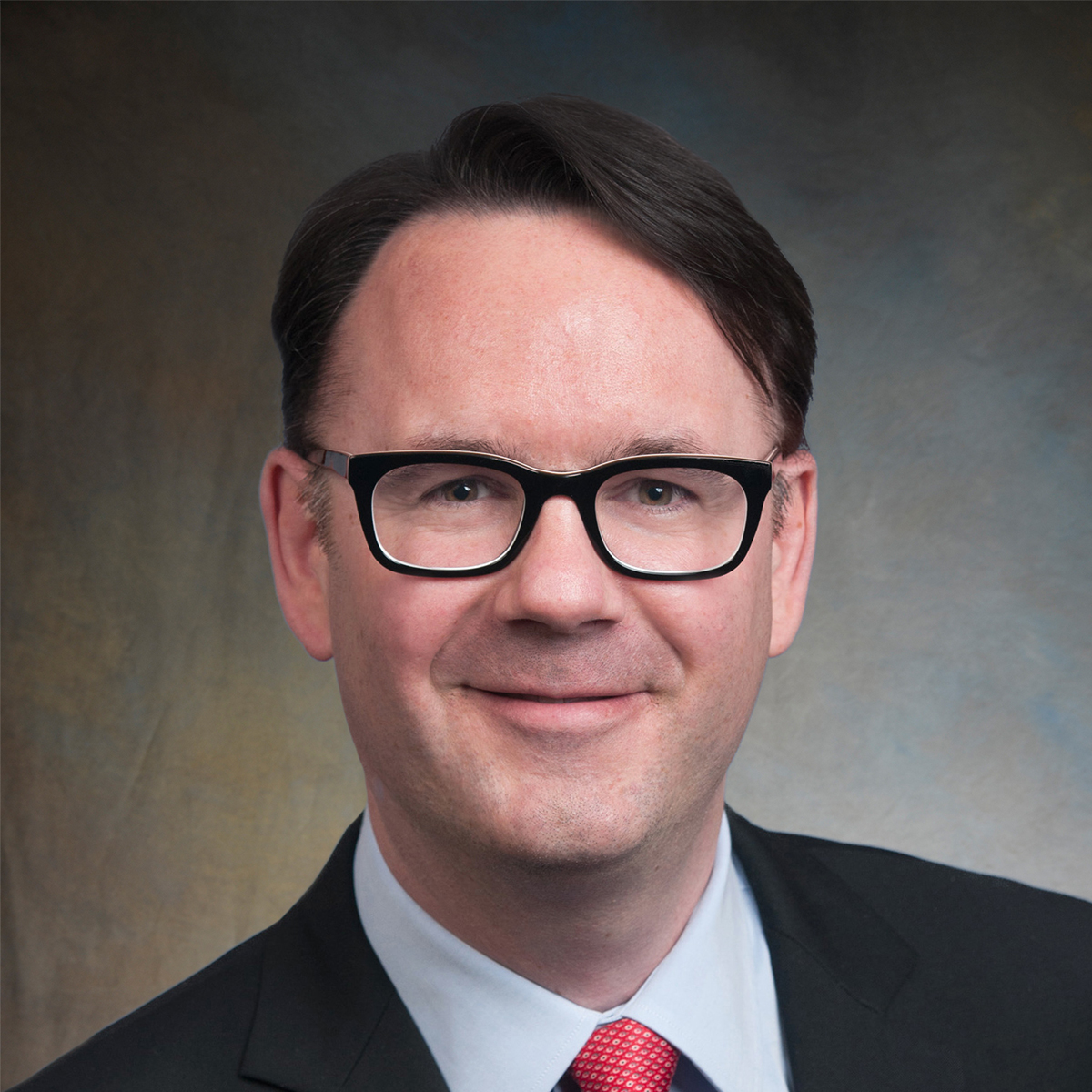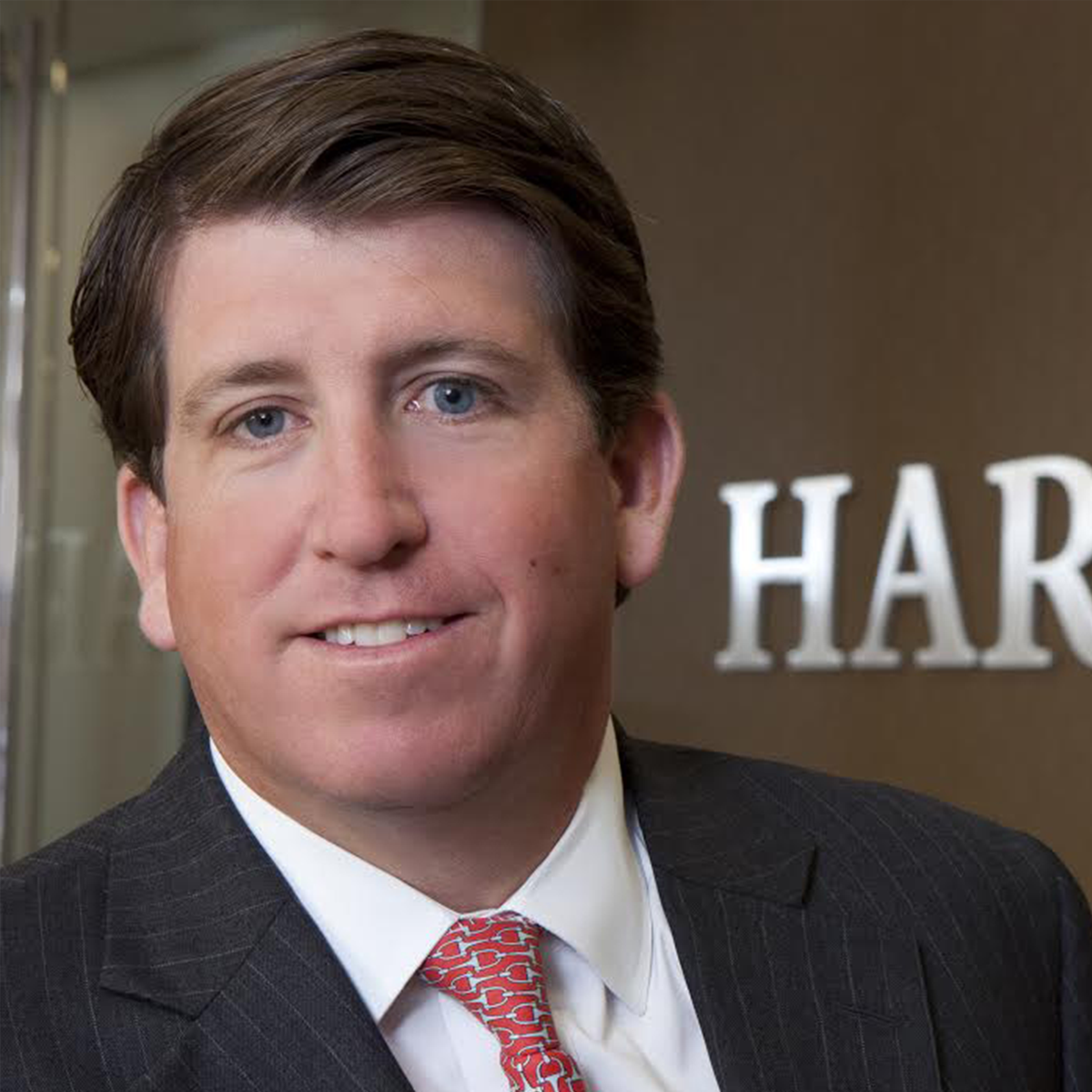Institutional Roundtable: Safety First
Institutional investors have risen in prominence throughout the current economic cycle, strategically deploying capital in long-term opportunities that offer attractive risk-adjusted returns. But nine years into the recovery, how is this cohort unlocking value in a rising-rate, compressed-yield climate?
By Sibley Fleming
Despite rising allocations to commercial real estate, institutional investors are sitting on a record $278 billion in dry powder, according to Preqin. This cohort has shown discipline throughout the current cycle, helping to sustain what’s already a historically long economic recovery, at nine years and counting. But in today’s high-valuation environment, yields continue their downward trend, leaving this cohort—with its longer investment horizons and more stringent safety requirements—to chase fewer feasible investment opportunities. Which property types and what strategies are these investors targeting at this stage of the game? Top investment experts weigh in.
Participants:
Tim Wang, managing director & head of Investment Research, Clarion Partners
Melissa Reagen, head of U.S. Research at TH Real Estate
Rex Rudy, executive vice president & Commercial Real Estate Group manager, U.S. Bank
Christopher Merrill, co-founder, president & CEO, Harrison Street Real Estate Capital
Lee Menifee, head of Americas Investment Research, PGIM Real Estate
Describe the current institutional investment climate and how it has changed this year.
Tim Wang: The current institutional investment climate is cautiously optimistic, given the market’s healthy supply and demand fundamentals. Capital raised and yet to be deployed is at a record high. Target portfolio allocations to real estate continue to increase and are now over 10 percent, on average, but lending criteria and equity underwriting standards remain relatively disciplined, as compared to the prior market peak. We have not seen any major shift in investor sentiment this year.
Melissa Reagen: Demand for institutional-quality real estate from investors remains strong and is only likely to grow as pension plans, sovereign wealth funds and retail investors seek to diversify their portfolio holdings from stocks and bonds. The (amount of) dry powder ready to be deployed in commercial real estate represents a high water mark in the past decade.
Lee Menifee: It’s remarkable how “normal” the climate seems now, as compared to a highly active—maybe even hyperactive—environment in 2015, followed by a more subdued period in 2016 and 2017.
Rex Rudy: With many feeling like we are nearing (a cycle) peak, some institutional investors have shifted their focus from equity to debt investments. They see attractiveness in the loan basis and are willing to sacrifice some yield in exchange for security.
Merrill: The overall sentiment remains favorable for real estate but, due to a cautious overtone, fewer dollars from domestic investors are being put to work in 2018 as investors wait for the cycle to turn. However, we’d note that investors have already allocated significant capital into the real estate space over the past several years, leaving less urgency to place capital today.
As we move later in the cycle, investors are looking to build more defensive characteristics into their portfolios. We continue to see strong interest and capital flows from foreign investors, mainly in Asia, Europe and the Middle East, who continue to view the U.S. real estate market as a “safe haven” with attractive long-term growth potential.
Which property types are most attractive to institutional investors at this point in the cycle?
Merrill: Based on our interactions with institutional investors, property types deemed more defensive with attractive cash flow characteristics are garnishing the most interest at this point in the cycle—student housing, medical office, seniors housing and self-storage. Regardless of the broader economic cycle, as the population moves through stages of life, there will always be some level of demand for (those) assets, given their demographic-driven and needs-based characteristics.
Menifee: A rotation into apartments makes sense as we get later into the cycle. They are defensive and provide consistent cash flows during downturns, for the simple reason that you can almost always lease them up, albeit at a lower rent than you might have expected. With lease terms of a year or less, you have the ability to raise those rents in the early stages of the next expansion.
This year, cap rates are stable, the transactions markets are active and leasing is still brisk. That’s not to say that all the bid-ask spreads that opened up after 2015 have closed. In some sectors, such as retail and office, sellers’ expectations are high, and they’re not motivated, while buyers are still waiting patiently. Meanwhile, buyers are meeting sellers’ expectations in the industrial and apartment sectors and some specialty sectors, such as self-storage.
Although industrial pricing has moved higher, we still find value in the sector. It is hard to say whether today’s pricing will hold up in the next downturn, but we have confidence that locations closest to large consumer bases will continue to grow in importance for a wide range of tenants, not just the e-commerce platforms.
Wang: Industrial is the most sought-after property sector today because of its superior return potential, and many institutional investors are currently under-allocated to this sector. Investor interest in apartments is also surging, due to the sector’s relatively low volatility and attractive long-term risk-adjusted total return profile.
Reagen: Industrial and apartments are seen as defensive given their underlying demand drivers. Rising e-commerce retail sales are driving warehouse demand, while many households’ inability to own a home is driving demand for apartments. Transaction volumes (for industrial and apartments were) up 34 percent and 7 percent, respectively, in the first eight months of 2018, relative to the same period in 2017. The Prologis acquisition of DCT Industrial played a large role in driving industrial transaction volumes in 2018.
Rudy: We are seeing strong demand from institutional investors in many of the traditional commercial real estate property types. The lone exception would be retail, which continues to face industry-level headwinds. Industrial is probably the property type that is most in vogue today, but it also tends to be the hardest in which investors can find good opportunities.
Where do alternative asset classes fit into your investment strategy?
Merrill: All we do is alternative, non-traditional asset classes, including education, health care and storage.
Wang: As U.S. core property assets become fully priced, investors are seeking potential opportunities in alternative property types, such as student housing, data centers, medical office and self-storage. These alternative property types tend to have different demand drivers compared to the core property types and may still offer attractive cap rate discounts for yield-seeking investors. We are bullish on some of these alternative property sectors because of their strong demand drivers, relatively durable cash flows and diversification benefits in an investment portfolio.
Reagen: The alternative property types offer some of the best risk-adjusted returns in the private real estate market. If you look at the public REIT market, the alternative sectors are trading at a premium to net asset value while the main property types—retail, office, apartments—are trading at discounts to NAV. This suggests that the alternative property types will see price appreciation in the private markets in the next 12-18 months while the more traditional property types will see price declines in the private markets during this same time period. By alternative property types, I am referring to sectors such as manufactured housing, data centers, self-storage, senior housing.
Menifee: We see non-traditional property types as a mixed bag. Some appear to be a typical later-cycle stretch for yield that won’t necessarily pay off, while others are underpinned by compelling demographics that should provide long-lasting value. In the former category, while there are compelling local opportunities to invest in student housing, it’s important to be mindful that with college enrollment peaking eight years ago, demographics are more of a headwind than a tailwind.
We would highlight two sectors that have a combination of attractive near-term returns and a bright long-term outlook. Senior housing is currently working its way through a supply spurt, but the construction peak is already in the past in most markets. Meanwhile, demand for senior housing is about to boom. Three times more seniors, people aged 75 and older, will be added to the population in the next 10 years as compared to the past 10 years. And two-thirds of the senior housing stock is more than 15 years old.
Manufactured housing also serves the housing needs of older residents, with many communities restricted to residents aged 55 and older. The 55-74 age cohort is also growing rapidly, and almost no new manufactured housing communities are being built.
How do you anticipate rising interest rates impacting institutional investment strategies?
Rudy: Institutional capital is sourced globally today, so while the Fed rate hikes may put upward pressure on property cap rates—and correspondingly downward pressure on property values—foreign investors’ demand for U.S.-based commercial real estate assets continues to be very high. As a result, we do not see this demand for U.S.-based commercial real estate assets being materially impacted over the near term.
Barkham: The (federal funds) rate will not do much. However, if the 10-year (Treasury rate) gets above 3 percent, investors will get a bit more cautious.
Wang: Rate hikes by the Federal Reserve over the past two years have not significantly impacted the investment strategies of institutional investors (because they) mainly impact short-term interest rates. Long-term interest rates, which are more influenced by inflation expectations and market supply and demand, have more direct impact on long-term real estate financing. However, as the Fed continues its path of additional rate hikes, the yield curve is poised to become flatter, which may portend an economic slowdown.
Reagen: It depends on how much the increases in the federal funds rate affect the longer-dated bond yields, such as the 10-year U.S. Treasury yield. The Federal Open Market Committee has increased the federal funds rate eight times from 0 percent in 2015 to the 2–2.25 percent seen currently, an increase of 200-plus basis points. The 10-year (U.S. Treasury rate) has moved from a low of 1.5 percent in 2016 to 3.0 percent as of late September 2018, an increase of 150 basis points. So while the 10-year U.S. Treasury had moved from 1.5 percent to just over 3 percent due to higher growth expectations, it hasn’t moved quite as much as the short end of the curve.
We expect 10-year U.S. Treasury yields to move higher as the FOMC continues to increase the federal funds rate, but the question is by how much. There is tremendous demand for U.S. Treasuries from both domestic and foreign investors. In many respects, U.S. Treasuries provide an attractive relative value when compared to other government bond yields across the developed world, driving demand for U.S. Treasuries. Such demand could keep the 10-year US Treasury yield lower than it might otherwise be.
Menifee: So far, it appears that most of the impact of rising rates has been absorbed by lenders rather than borrowers. Lending spreads continue to narrow across the debt portion of the capital stack, for senior and non-senior loans alike. Not only are spreads lower, but other terms such as full-term interest-only and non-recourse carve-outs are becoming more borrower-friendly. That said, underwriting standards remain considerably tighter than they were near the end of the (most recent) cycle.
On the equity side, the main response to rate hikes will be to focus not just on the stability of income streams, but more on the growth potential of those income streams. This is happening already, with the most cap rate compression in industrial, where rent growth is still the strongest of the major property types. In addition, we expect some of the rate increases to constrain construction activity. Not only are rising rates making construction loans more expensive, but this is happening in a period where construction materials costs have risen, and labor is simultaneously becoming more expensive and less available.
Merrill: In our view, rising short-term interest rates are most notably affecting value-add or opportunistic borrowers that have shorter-term business plans than traditional core, long-term, fixed-rate borrowers. Therefore, shorter-term strategies may feel the most pressure and utilize higher leverage/mezzanine to obtain the same returns, however, with more risk.
In this rising-rate environment, there is greater downside risk in pricing and asset valuations for traditional real estate sectors. This is primarily driven by the tight spread between cap rates in the traditional sectors and the cost of financing. Conversely, (the sectors we target) continue to pose an attractive cap-rate spread to traditional real estate of (around) 100 basis points and with a similar cost of debt. (Those) sectors offer higher cash yields, which is helping to drive more investor interest.
Gateway cities have historically been preferred locations for institutional investment, with expansion into secondary and tertiary markets for better opportunities. How do you see this strategy evolving?
Wang: Gateway cities have outperformed due to their significant economic growth drivers and comparative supply constraints. Nonetheless, in this market cycle, Washington, D.C., and New York have generally lagged the benchmark as the federal government and the financial services industry remain stagnant. Several secondary markets, such as Denver, Austin, Portland and Nashville, have experienced much faster growth in both jobs and population. We see increasingly attractive opportunities for both investment and development in these high-growth secondary markets.
Reagen: The term gateway cities will likely seem outdated in the coming decade as cities such as Charleston, Charlotte, Orlando, Raleigh, Atlanta, Austin and Denver become attractive for real estate investment in their own right. Higher education and health care often have strong ties to the tech sector, which is particularly evident in places like Raleigh and Austin. While Charleston is known as “Silicon Harbor,” the city’s health-care sector has added the most jobs in recent months and is projected to be the top source of near-term job gains. Charlotte’s competitive advantage in the banking industry is creating growth opportunities for financial technology. Disney is the largest employer in Orlando, and consistently ranks as a top 10 desirable employer among Millennials. Corporate headquarters drive growth in locales such as Austin and Atlanta. Austin is home to Whole Foods, Minneapolis to Target, and Atlanta to Coca-Cola, UPS, Delta and Home Depot.
Menifee: Our short-term apartment and office outlook is strongest in the Sunbelt, where we see both strong demand drivers, particularly due to population growth and migration, and in some cases supply pipelines that are thinner than in prior expansion periods. We see cyclical investment opportunities in Sunbelt apartment markets, such as the major Florida metros, Raleigh, Charleston and in a rebounding Houston market. In the office sector, we see near-term value in markets such as Atlanta, Charlotte, Phoenix and, looking a little further out, Houston.
However, this short-term view is a little bit at odds with the long-term one. Our research has found that supply constraints, partly physical but mostly regulatory, are the primary driver of long-term returns. These supply constraints are present in most of the gateway markets. So for longer-term investments, we will still be biased toward gateway markets.
Rudy: As institutional investors look to find yield, we expect to continue to see them expand into secondary and tertiary markets throughout this stage of the commercial real estate cycle.
Merrill: Success in a secondary and tertiary market is highly dependent on the property type, strategy and knowledge of the local markets.
What are the expectations for green certification or sustainability inclusion in your acquisition decisions, and how does that impact your perception of an asset’s value?
Menifee: In many ways, green certifications and sustainable investing are already the norms, and as an industry, we are better able to track and quantify those criteria than ever before. Going beyond sustainability certifications, we’re interested to see how much momentum impact investing will have on the industry. The distinguishing feature of impact investing is the concept of intentionality, which essentially means that for impact investors it’s not enough to minimize social and environmental impacts, but rather to invest in real estate that improves social and environmental outcomes. We have already seen a rise in institutional capital targeting impact investing in the past decade and expect that momentum to continue to build.
Wang: Sustainability is an increasingly important consideration in investment decisions in the U.S. It is both a responsibility and an obligation of the U.S. commercial real estate industry to contribute to a more sustainable global environment. Tenants overwhelmingly prefer energy-efficient buildings. Consequently, most investors would prefer to invest in either currently green-certified buildings or buildings that have the potential to be upgraded during the investment period.
Reagen: Our sustainability team opines upon each deal, and we are always seeking green certifications across our properties. We strongly believe that sustainability will play a major role in real estate investments in the years to come. The 2018 Global Real Estate Sustainability Benchmark (GRESB) results have recently been released. TH Real Estate continues to be a leader in this index. Of the 16 THRE funds that participated, all achieve ‘Green Star’ Status, apart from UK Property Fund. This is viewed as being a significant marker of sustainability leadership and is a minimum investment requirement for some of our investors.
Merrill: As part of our due diligence process for each new acquisition, we determine if the property is already certified, as well as the likelihood for implementing sustainability initiatives. Asset classes, like self-storage, cannot obtain certifications such as ENERGY STAR, however, certifications are fitting for both student and senior housing. Given our overarching focus on health care, we have seen that investing in more efficient buildings helps to attract both residents and staff, and in many cases, a rent premium can be charged. Accordingly, we see a strategic advantage to pursuing newer sustainability certifications like WELL and Fitwel.
How are return expectations and risk appetite changing?
Reagen: Most institutional real estate investors are lowering their return expectations because they understand the real estate cycle is mature. The real estate market recovery is nearly nine years old, making it one of the longest real estate recoveries in recent history. According to Preqin, institutional investors are seeking fewer opportunistic real estate strategies and more core strategies with an understanding that opportunistic strategies tend to produce more attractive risk-adjusted returns at the beginning of a cycle rather than towards the end. Further, more investment managers are raising commercial mortgage funds, making a bet that institutional investors will want to invest in commercial mortgages, which are relatively safer than equity positions, at this point in the cycle.
Wang: Today competition for well-located, high-quality core assets in primary markets is fierce. Some investors are moving up the risk spectrum and executing more value-add and build-to-core strategies for higher returns. Other investors are slightly more risk-averse and are lowering leverage and expanding core exposure. Market evidence suggests that overall investor return expectations are generally declining, albeit slowly.
Rudy: Rising construction and labor costs have impacted return expectations on many proposed construction projects and even delayed some decisions to move forward. Additionally, yields on stabilized assets in core markets have continued to compress. The result is a modest increase in risk appetite as institutional investors focus on more value-add opportunities to meet return hurdles.
Menifee: Most investors have been accepting lower returns for the fixed levels of risk they are comfortable taking. For instance, in the core investing space, leverage ratios are about the same as they were two to three years ago, non-core exposure is not rising and investments continue to be focused in large, liquid markets. However, we have seen evidence that investors are seeking exposure to higher returns. While net flows into U.S. core funds have basically been flat for the past two years, investors continue to invest in value-add and opportunistic equity funds. In addition, debt funds are attracting capital, and some of that is capital diversifying away from other fixed-income investments rather than coming out of investors’ real estate allocations.
Merrill: Similar to other asset classes, real estate has experienced return compression over recent years, and we expect further tightening in the near future. The massive amount of capital flowing into real estate has been one of the biggest factors in recent pricing. This has impacted the direction of flows for some investors as they look to mitigate valuation risk.
You’ll find more on this topic in the November 2018 issue of CPE.














You must be logged in to post a comment.